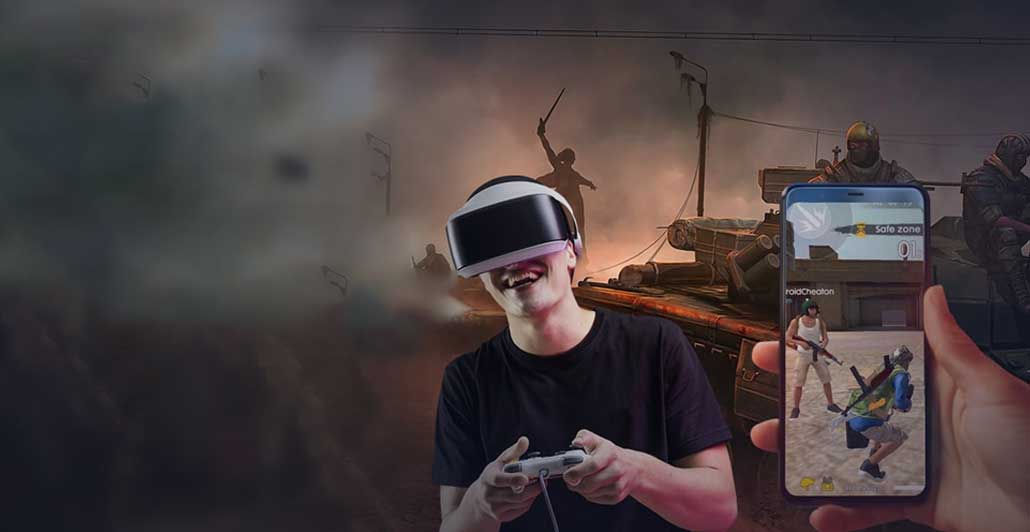
The gaming industry has always thrived on innovation, constantly pushing the boundaries of what’s possible. In recent years, two emerging technologies – Augmented Reality (AR) and Virtual Reality (VR) – have begun to reshape the landscape, offering unparalleled immersion and novel gameplay experiences. This blog delves into the transformative impact of AR and VR on gaming, exploring the exciting possibilities they unlock and the challenges they present.
Demystifying AR and VR: A Tale of Two Worlds
Understanding the fundamental differences between AR and VR is crucial to appreciating their unique contributions to gaming.
- Augmented Reality (AR): AR overlays digital elements onto the real world, seamlessly blending virtual and physical environments. Imagine battling aliens in your living room or solving puzzles on your coffee table – AR makes it possible. Popular AR games like Pokémon Go revolutionized mobile gaming by integrating the virtual world with real-world locations.
- Virtual Reality (VR): VR transports users entirely into a computer-generated environment. By wearing a VR headset and controllers, players become fully immersed in a virtual world, interacting with objects and characters as if they were truly present. Games like Half-Life: Alyx showcase VR’s potential to create hyper-realistic experiences that blur the lines between reality and simulation.
A New Era of Engagement: How AR and VR are Transforming Gaming
AR and VR introduce a plethora of exciting advancements that are fundamentally changing the way we play:
- Enhanced Immersion: VR allows players to step into the shoes of their characters, fostering a deeper connection with the game world. Imagine dodging bullets in a first-person shooter or soaring through the skies in a virtual reality flight simulator – the feeling of presence is unparalleled.
- Interactive Storytelling: AR and VR open doors for interactive storytelling experiences. Imagine exploring a virtual museum where historical figures come alive before your eyes, or solving puzzles embedded within your physical environment. These technologies allow games to weave narratives in a more captivating and interactive manner.
- Location-Based Gaming: AR’s ability to blend virtual and real-world elements fosters the rise of location-based games (LBS). Imagine exploring your city and encountering virtual creatures to battle, or participating in treasure hunts that unfold across real-world locations. AR injects a layer of excitement and discovery into everyday environments.
- Personalized Experiences: AR and VR hold the potential to personalize the gaming experience. Imagine a fitness game that adapts its difficulty based on your physical movements through AR, or a VR horror game that adjusts its scares according to your heart rate. These technologies create dynamic and personalized experiences tailored to individual players.
Beyond the Horizon: Challenges and Considerations
While AR and VR offer immense potential, there are challenges to consider:
- Accessibility and Cost: VR headsets can be expensive, limiting accessibility for some players. AR technology is also evolving, and widespread adoption might require advancements in hardware affordability.
- Content Creation: Developing compelling AR and VR games requires specialized skills and tools. The current landscape may be dominated by established studios with the resources to invest in these technologies.
- Motion Sickness and User Comfort: VR experiences can induce motion sickness in some users, hindering gameplay. Continued advancements in VR hardware are crucial to ensure user comfort during extended play sessions.
The Road Ahead: A Future Painted with AR and VR
Despite these challenges, the future of gaming looks intertwined with AR and VR. As technology continues to develop, these advancements are poised to become more affordable, accessible, and user-friendly. Here’s what we might expect:
- The Rise of Cloud Gaming: Cloud gaming services can power demanding VR experiences without requiring expensive hardware locally. This could democratize VR gaming and make it accessible to a wider audience.
- Evolving Hardware: Advancements in headset design, resolution, and motion tracking can enhance the comfort and realism of VR experiences.
- Integration with Other Technologies: AR and VR can seamlessly integrate with other technologies like AI and haptics to create even more immersive and interactive experiences. Imagine feeling the rain in a virtual world or interacting with AI-powered characters that respond with true emotional depth.
Conclusion: A Canvas of Possibilities
AR and VR represent a paradigm shift in the way we experience games. They offer a gateway to entirely new worlds, fostering deeper immersion, interactive storytelling, and personalized experiences. While challenges exist, the future of gaming seems undeniably intertwined with these revolutionary technologies. As AR and VR continue to evolve, the possibilities for innovation and captivating gameplay experiences are truly limitless.
This exciting convergence of technology and storytelling promises to redefine the boundaries of what gaming can be, painting a future filled with wonder, immersion, and boundless entertainment.










